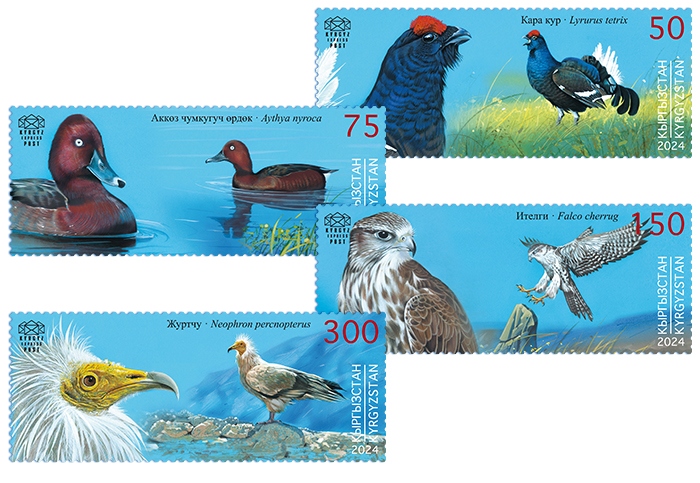
Kyrgyz Republic Red Data Book (V). Birds
Newsletter no. 108.pdf
On June 27, 2025 the Ministry of Digital Development and Innovative
Technologies of the Kyrgyz Republic puts into circulation a series of 2024 Kyrgyz Express Post postage
stamps: "Kyrgyz Republic Red
Data Book (V). Birds".
The new issue of KEP postage stamps is dedicated to protected bird
species listed in the Red Data Book of the Kyrgyz Republic. Birds are an adornment of the country’s fauna,
and they require protection and conservation. KEP hopes that this issue will help raise awareness and
promote efforts to conserve bird species threatened with extinction. Often, it is human activity that causes
the catastrophic environmental changes that lead to the decline of biodiversity on Earth. And it is people
who are both responsible for and capable of correcting their mistakes, thus preserving the unique nature of
our planet, including the wonderful world of birds.
The KEP stamps feature four red-listed bird species of Kyrgyzstan.
The Black Grouse (Lyrurus tetrix) is a bird
in the pheasant family, belonging to the order Galliformes. In Kyrgyzstan, it inhabits the spruce forests of
Chon-Kemin and the
eastern part of the Issyk-Kul basin. It prefers mountain spruce forests with an undergrowth of rowan,
barberry, and other shrubs, interspersed with open glades. The black grouse feeds on insects, leaves and
seeds of grasses, berries, and in winter, on spruce needles. The main limiting factors that seriously affect
the black grouse population include livestock grazing in spruce forest zones and poaching. Main natural
predators of the black grouse include wolves, foxes, golden eagles, goshawks and domestic dogs. Eggs and
chicks are often destroyed by small predators, magpies and crows. The black grouse was included in the Red
Data Book of the Kyrgyz SSR back in 1985. Currently, it is protected in the "Karakol" and "Chon-Kemin" state
natural parks of the Kyrgyz Republic.
The Ferruginous Duck (Aythya nyroca) is a
small diving duck from
the Anatidae family. Its name comes from the color of its eyes: in males, the iris of the eyes is
yellowish-white (appearing white from a distance). In Kyrgyzstan, it is found during migration in the Chuy
Valley, the Issyk-Kul region, and the high-altitude lakes of the Inner Tien Shan. It prefers lakes,
reservoirs, and ponds rich in aquatic vegetation and populated by small aquatic animals. The Ferruginous
Duck is a migratory species. In spring, the first birds arrive in Kyrgyzstan from early to mid-April. Autumn
migration occurs in September-October. Its diet mainly consists of aquatic plant matter, as well as seeds of
legumes, buckwheat and buttercup families. Occasionally, it also feeds on aquatic insects, mollusks, and
small fish. The population of the ferruginous duck has been steadily declining due to habitat destruction,
poaching, and unfavorable environmental conditions. Like many other species, it urgently requires human
protection and conservation.
The Saker Falcon (Falco cherrug
) is a very rare species of birds of
prey from the falcon family. Its diet mainly consists of small mammals and birds. Since ancient times,
people have highly valued saker falcons as hunting birds. In Kyrgyzstan, they nest exclusively in
mountainous areas at elevations of at least 1300–1500 meters, but
can reach altitudes of up to 3000 meters above sea level. During hunting, they may also appear in
lower-lying regions. In the wild, the average lifespan of saker falcons is 18 to 20 years. Unfortunately,
its population is rapidly declining worldwide, including in Kyrgyzstan. The saker falcon is now under threat
of extinction, primarily due to human activity. However, people can take the necessary steps to save this
beautiful and ecologically important bird. The species was included in the Red Data Book of the USSR in 1985
and is currently protected in several nature reserves across Kyrgyzstan.
The Egyptian Vulture (Neophron
percnopterus) is the smallest representative of the subfamily Gypaetinae, with a wingspan of about
165 cm. It is a scavenger, feeding mostly on carrion, as well as on waste and small animals. The
Egyptian vulture has a bald head with folds and bright yellow skin. Adult plumage is white with long black
feathers along the edges of the wings, which are especially visible in flight. Egyptian vultures are
migratory, forming permanent pairs. Nests typically contain two eggs, with both parents incubating and
raising the offspring. In Kyrgyzstan, it is found widely, though not at high altitudes, preferring arid
foothills and mid-altitude areas. Scavengers like the Egyptian vulture play an essential role in ecosystems
as natural sanitizers, cleaning up animal remains and preventing the spread of various diseases.
KEP expresses its special gratitude to Sergey Kulagin, Chairman of
the Kyrgyz Wildlife Conservation Society (KWCS), for his valuable advisory assistance in the preparation of
this postage stamps issue.
For this series, KEP also issues four postcards, which are used to
realize four maximum cards.
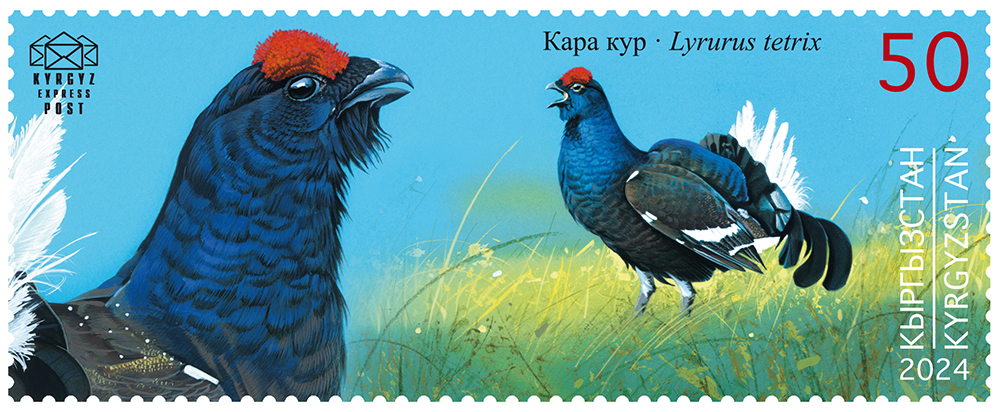
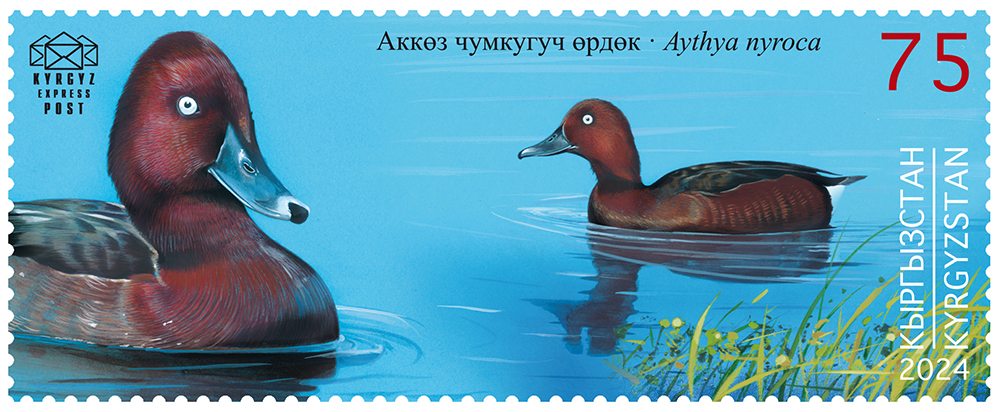
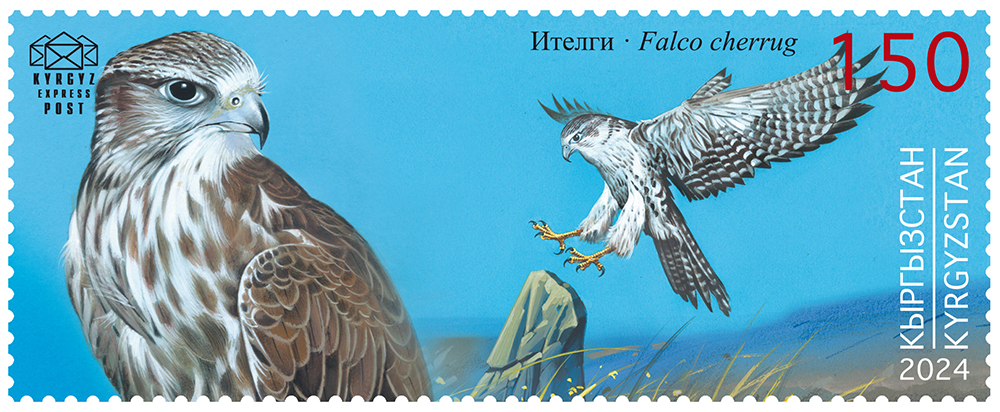
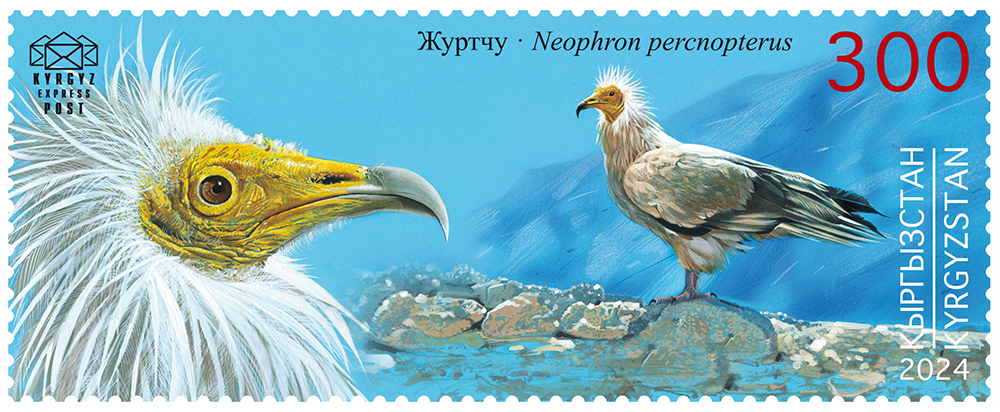
Stamps description
No. 243. 50 KGS. The Black Grouse (Lyrurus tetrix)
No. 244. 75 KGS. The Ferruginous Duck (Aythya nyroca)
No. 245. 150 KGS. The Saker Falcon (Falco cherrug)
No. 246. 300 KGS. The Egyptian Vulture (Neophron percnopterus)
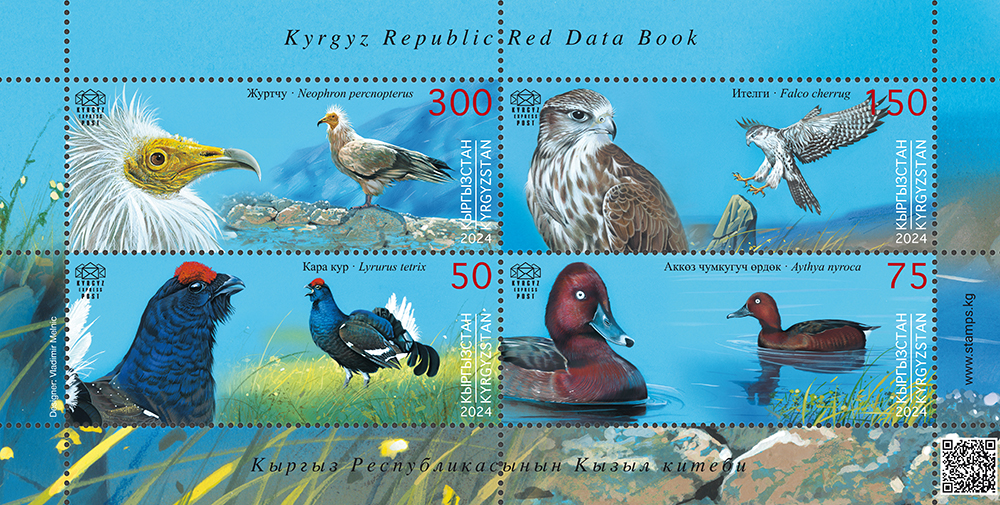
Technical specifications
Paper: coated, gummed, 105 g/m².Printing method: full-color offset lithography.
Stamps perforation: comb 14:14½.
Stamps size: 69 × 27.5 mm.
Stamps are issued in minisheets of 5 stamps
with one label. Stamps are also issued
in a collective minisheet of 4 stamps
(one complete set).
Minisheets size: 159 × 108 mm.
Collective minisheet size: 159 х 80 mm.
Quantity issued: 9 000 pieces each stamp (6 000 in minisheets plus 3 000 in collective minisheets).
Designer: Vladimir Melnic.
Printer House: "Nova Imprim" (Chișinău, Moldova).
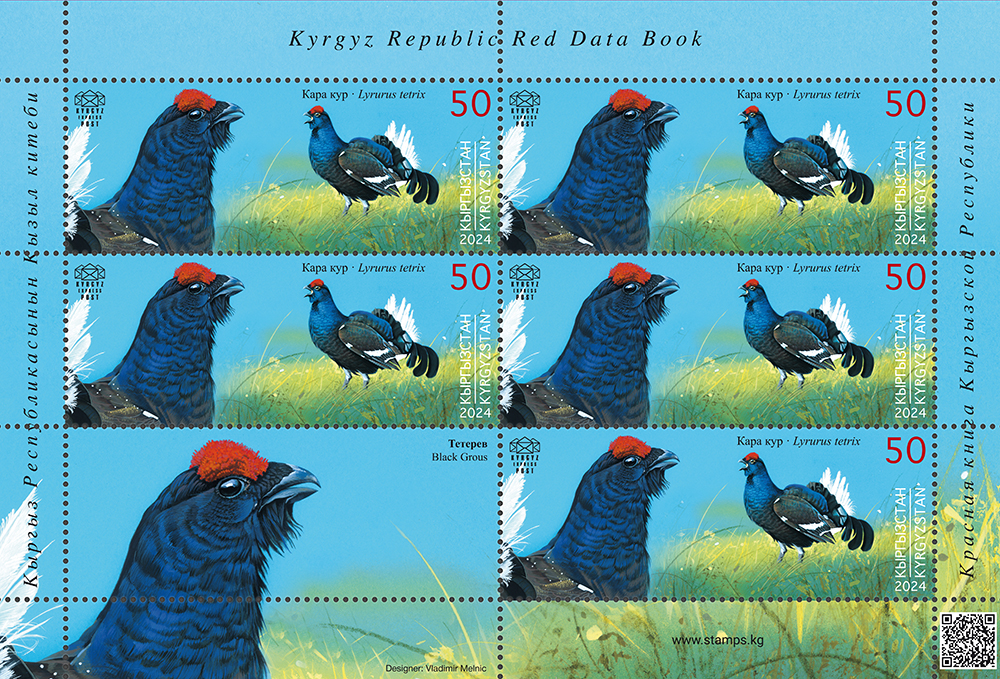
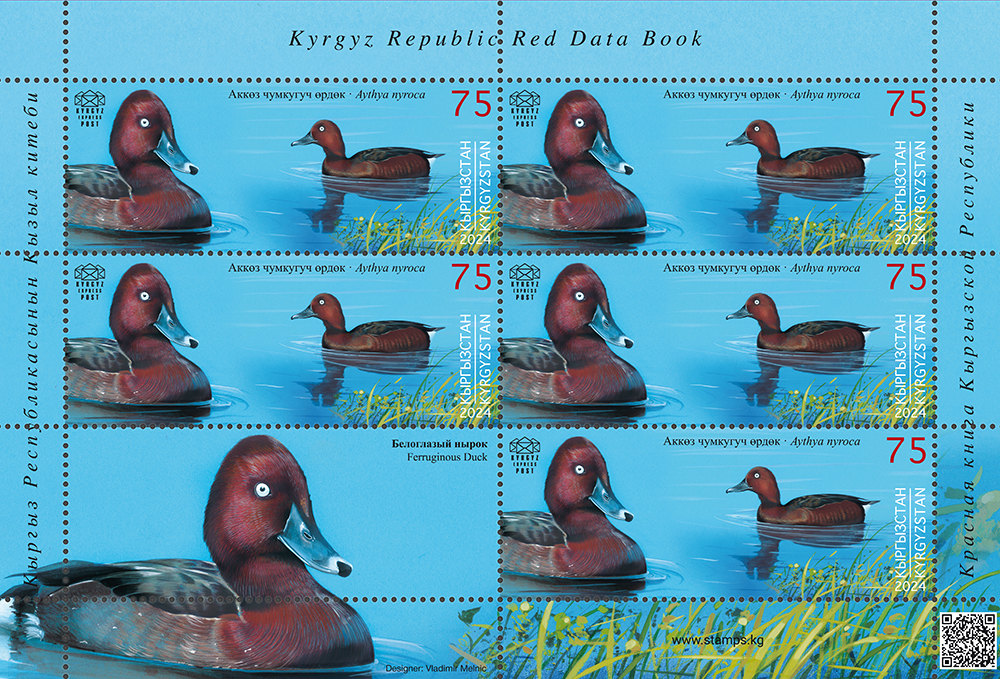

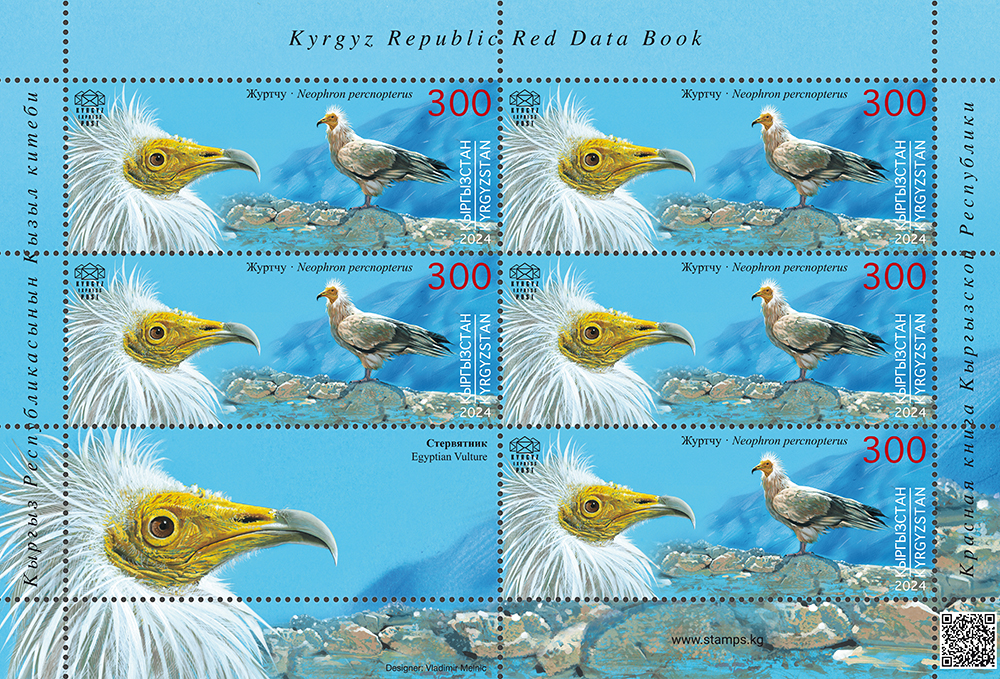
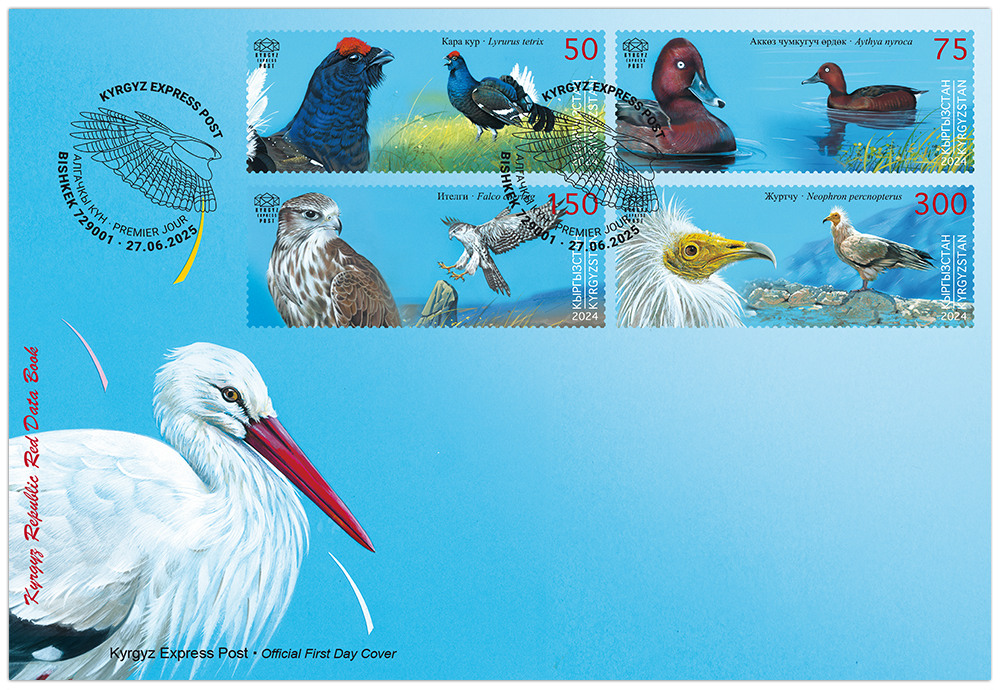
A special cancellation on FDC will be carried out at the Bishkek KEP Office (729001) on the stamps issuing day.
The first day cover and special postmark are designed by Vladimir Melnic.
Cover size: 190 × 130 mm.
Quantity of covers and postcards issued: 400 pieces each.
Endorsing ink color: black.
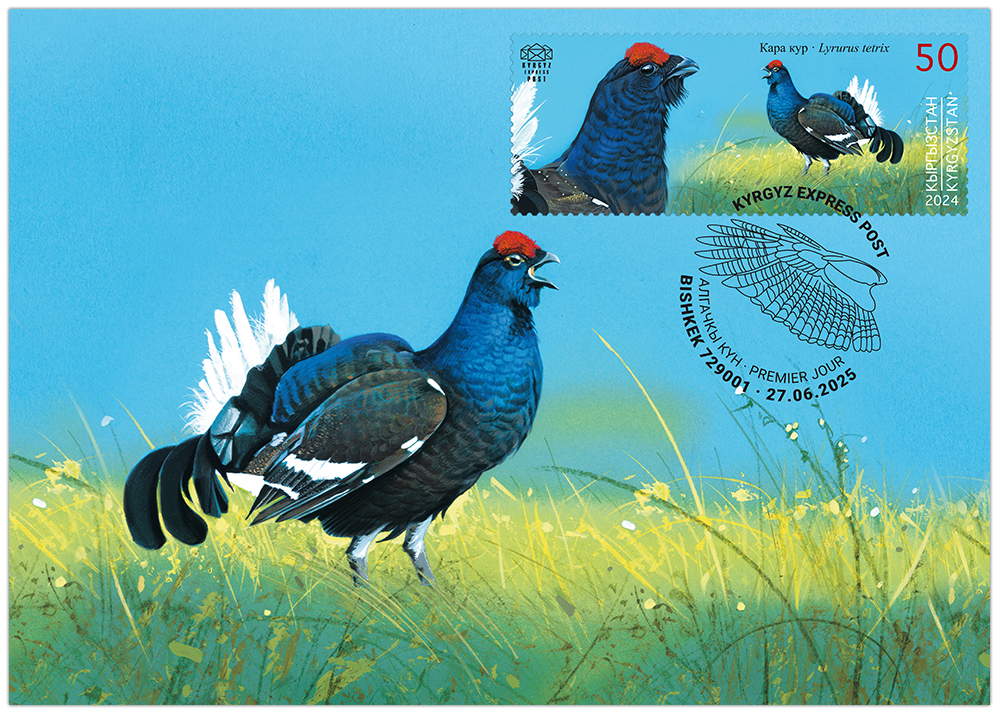
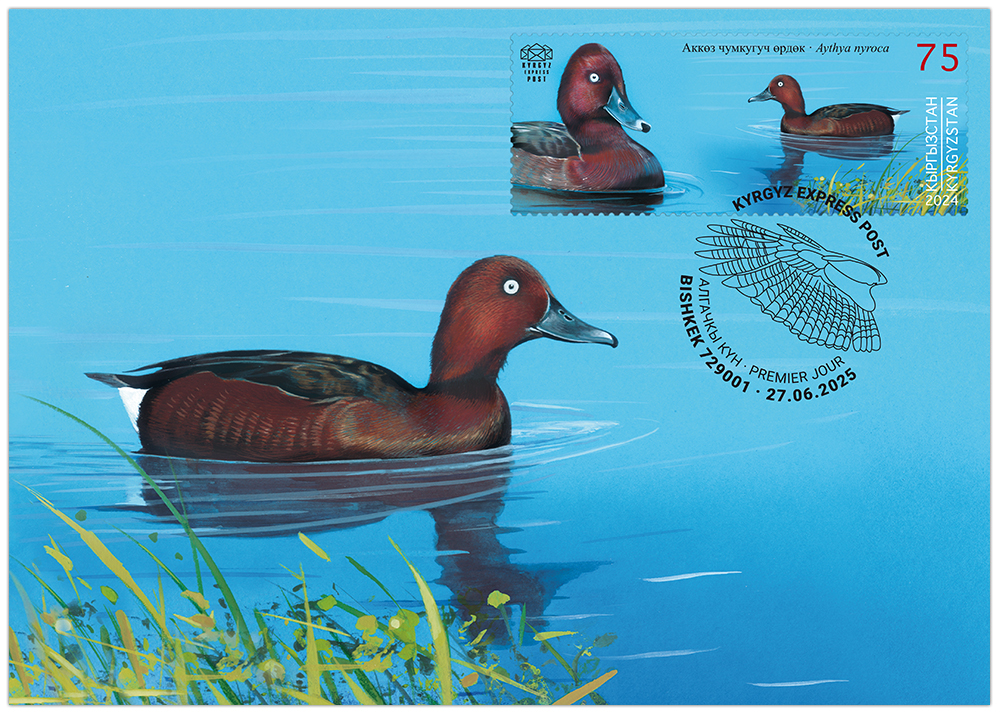

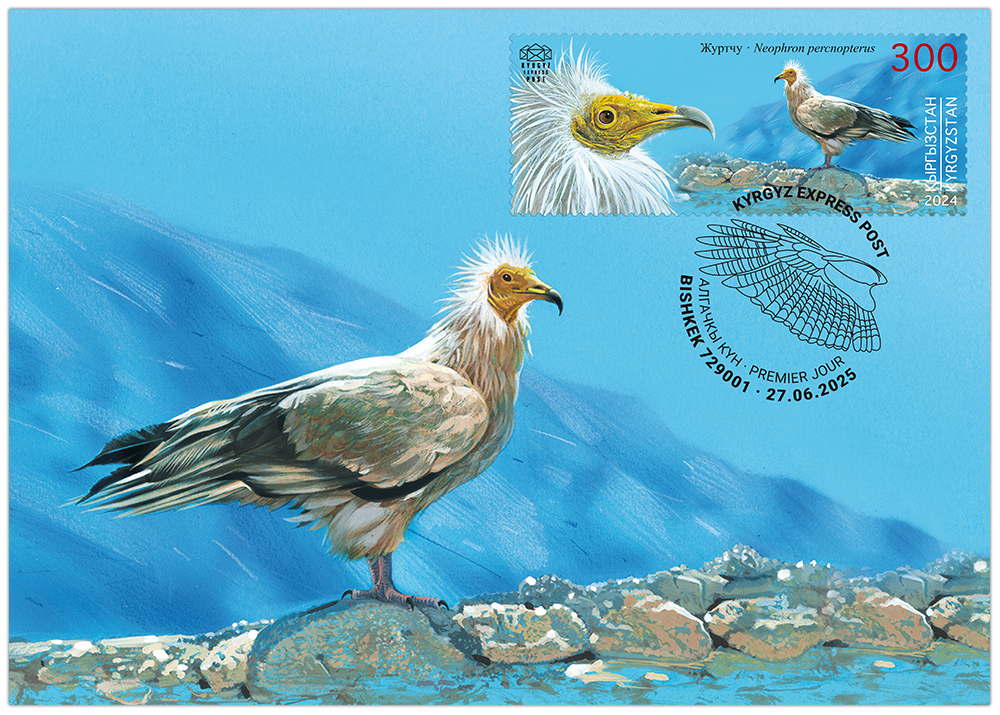
Stamps, maximum cards and FDCs can be purchased here.



